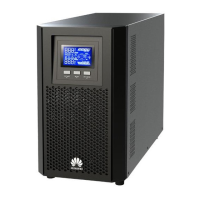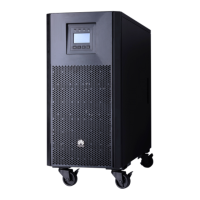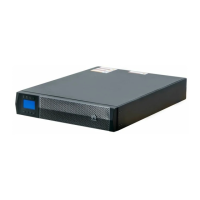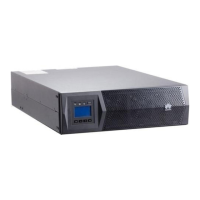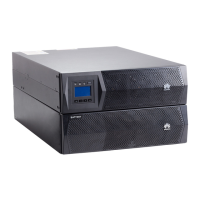UPS2000-A-(6 kVA-10 kVA)
User Manual
Copyright © Huawei Technologies Co., Ltd.
Step 2 Perform "shutdown operations" on each UPS in the parallel system. All inverters shut down at
the same time, and the parallel system transfers to bypass mode.
Step 3 Switch off the following circuit breakers in sequence: the upstream AC input circuit breaker
of each UPS, the AC input circuit breaker at the rear of each UPS, the general AC input
circuit breaker of the parallel system, the AC output circuit breaker of each UPS, and the
general AC output circuit breaker of the parallel system. After all indicators turn off and fans
stop, the UPS shuts down and stops supplying power to loads.
Step 4 (This step is required only for the UPS with long backup time.) If the battery circuit has a
circuit breaker, switch off the external battery circuit breaker. If the battery circuit does not
have a circuit breaker, disconnect battery cables.
----End
5.3.3 Performing EPO for a Parallel System
Turn on the EPO switches (provided by the customer). The UPSs enter the EPO state. That is,
the UPSs shut down the inverters, and do not transfer to bypass mode.
Figure 5-39 shows the EPO cable connection On a parallel system.
Figure 5-39 EPO cable connection on a parallel system
Connect an external switch to the EPO port and turn on the switch. After you turn on the switch, the
inverter stops, and the UPS does not transfer to bypass mode. In this way, the UPS stops supplying
power immediately.
The external switch (switch or dry contact signals controlled by a switch) is provided by the
customer.
After UPSs enter the EPO state, a 55-1 EPO alarm is generated. After the EPO is cleared, choose
CTR > ALR CLR clears the automatically detected and manually cleared (ADMC) alarms on
LCD, as shown in Figure 5-40.
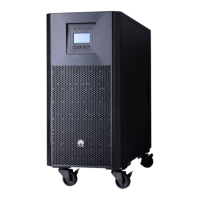
